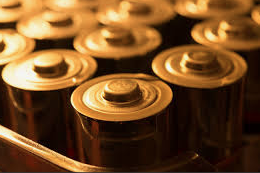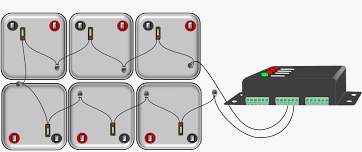
The Pros and Cons of Lithium-ion Batteries
The Lithium-ion battery is one of the most efficient batteries in the world. Many of the products we have come to rely on use Li-ion batteries. From our smartphones to our laptops to even industrial power tools, the Li-ion battery allows these products and more to last longer. It is important to educate ourselves about these products and their safety.
Within the past few years, there have been reports of products that include the failure of the Li-ion battery. The battery resulted in over-heating, catching fire, and in some incidents, it exploded. Naturally, these incidents raised eyebrows. But, it is important to understand why these risks came to pass.
One of the most famous product recalls due to its battery malfunction was Samsung’s Galaxy Note 7. With 100 dangerous incidents, 2.5 million smartphones were recalled all over the world. In some cases, the battery failure caused the phone to explode resulting in injury. So, what happened?
According to an article in Wired, “the overheating was caused by separate problems in batteries sourced from two different suppliers . . . [In the] Samsung SDI, there wasn’t enough room between the heat-sealed protective pouch around the battery and its internals,” which caused short-circuiting. And, “in the case of batteries sourced from Amperex Technology Limited, some cells were missing insulation tape . . . The batteries also had thin separators in general, which increased the risks of separator damage and short-circuiting.”
Since the Galaxy Note 7’s recall, Samsung ran many tests to make sure their phones stay safe, but this recall proved that the more you know about potential risks, the better you can prepare yourself and understand possible warning signs.
One thing to understand about Li-ion batteries is that it needs to be protected. And, Battery Management Systems (BMS) will do just that. A BMS is used to monitor and protect Li-ion batteries for each individual cell’s voltage, thermal protection, over-current, cell balancing, and fault detection. Per a report from Dfr Solutions, they are designed to stop all charge and discharge current if it deems necessary, which can help prevent or contain a thermal runaway event. So, the BMS must be properly designed, integrated and installed to do its job and provide proper protection.

There are many types of failures that can contribute a Thermal Runaway Event (TRE), which is a chemical reaction and/or shorts inside of the cell caused by an increase in temperature. Once this is initiated it is like a domino effect, the heat continues to intensify until it there is nothing left to react to. According to a study in the Journal of Power Sources, “’failure’ has multiple definitions in various situations . . . One description of failure assumes that failure only depends on the condition variables. Once the condition variable exceeds a predetermined threshold, failure has occurred. Other definitions of failure are judged by criteria such as performance (performing at an unsatisfactory level), functionality (incapable of conducting specific function) and availability (machine breaks down)” (Zhang, 6008). This means that the issue could be over-heating, over-charging, and chemical and metal contamination that has drawn more attention to the heat, which could potentially cause a fire or explosion.
Lithium-ion batteries need to be protected. According to Sciencing, “for safe operation, manufacturers equip lithium-ion battery packs with a protection circuit, which limits the cell’s voltage during charging and discharging to a specified safe range.” A protective casing around the Li-ion battery itself helps prevent damage to the product and can help prevent potential injury if a thermal runaway event should occur.
Li-ion batteries have risks, but their value and purpose have so many benefits. They have an amazing amount of energy in a small package that can power electric cars, industrial tools, and safety tools and equipment that first responders use that save lives every day.
There are many obvious benefits to using Li-ion batteries. They are portable/cordless, rechargeable, long-lasting, and light-weight. They have the best energy density of storage than any other battery.
The potential risks that can occur are unpredictable incidents that are weighing on statistics. They are a product of science, and risks are to be planned.
Professor John Goodenough of The University of Texas at Austin is the co-inventor of the new Li-ion battery. Goodenough explains, “Fires or explosions are possible, but not common . . . Some failures don’t get widely reported if no one is hurt or there is little financial loss, but there is always a potential hazard with a flammable liquid electrolyte.”
But, the research and development continue to make sure that this high-functioning, efficient battery is safe. “We are developing battery cells with a solid electrolyte that avoids these problems. We use a unique and remarkable glass electrolyte. All other solid electrolytes have too low a cation conductivity animist to be operated above 50 centigrade, we can go to below minus 20 centigrade” explains Professor Goodenough.
RAMFAN manufactures portable ventilation equipment for the fire industry, industrial sites, the Navy, and more. Their equipment is made to keep people safe from potential hazards. Li-ion batteries are their main source of power to keep their products advanced and long-lasting. The design engineers take many safety precautions to make sure the battery packs are not only made to last, but to keep the operator and equipment safe.
Scott Carroll is a design engineer with RAMFAN. He has been designing Li-ion battery charging systems since 2008. Through the last ten years and tons of education, he has learned that when approaching the design of a Li-ion battery you need to be aware of the thermal management pressure. “We let them expand slowly through a vent, otherwise: BOOM!” Carroll explains. He goes on to explain that the vent in the protective battery pack is very important. It doesn’t allow the toxins of what’s forming inside the battery pack out into the ventilation of the fan; the toxins are released into an open atmosphere.
Another safety precaution that RAMFAN addresses are making sure that the protective battery packs are waterproof. Inside the battery pack is an IP67 — “IP” meaning, Ingress Protection; “67” meaning, it’s submersible. The IP67 protects the battery management system, which monitors the Li-ion battery. If water hits the BMS, many of the potential risks discussed above can ensue. And, as Carroll mentioned before, “BOOM!” He also explains that there is a Pressure Compensation Valve in the battery pack that makes sure the pressure is the same on the inside and outside to help prevent failure.
RAMFAN will take as many precautions measures as needed to make sure their Li-ion batteries are protected and set-up for success. Their safety equipment is made specifically for people with high-pressure jobs, so they set out to make sure their products are up for the task.
The Li-ion battery is a great asset for our products, but it is important to understand why there have been incidents that make us question their risk. Thermal runaway events are not common but have happened. They are unpredictable, but the risk of an explosion or fire can attempt to be prevented with protective casings, a Battery Management System, and taking care of the product.
Reference:
Zhang, Jingliang, and Jay Lee. “A Review on Prognostics and Health Monitoring of Li-Ion Battery.” Journal of Power Sources, vol. 196, no. 15, 2011, pp. 6007–6014., doi:10.1016/j.jpowsour.2011.03.101
By Laura Canepa

